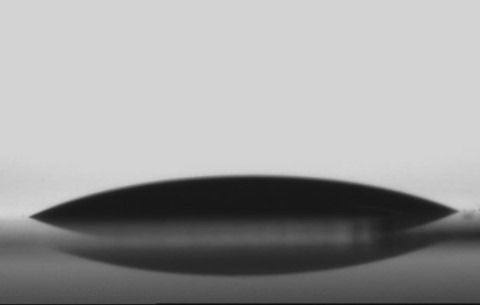Overview of Surface Hydrophilic Treatment
Hydrophilic modification of the surface of a biochip is to make the surface hydrophilic by introducing hydrophilic modifiers or changing the surface chemistry so as to realize the adsorption and wetting effects on water or aqueous liquids.
Hydrophilic modification can facilitate the interaction of biochips with aqueous fluids, which is beneficial for applications such as molecular recognition, cell culture and fluid manipulation. The following are some common methods of hydrophilic modification of biochip surfaces:
1 Self-assembly of hydrophilic molecules: Utilizing the principle of self-assembly, a layer of organic molecules with hydrophilic properties is introduced on the surface of the biochip. Commonly used hydrophilic molecules include hydroxyl compounds, polyvinyl alcohol (PVA), polyacrylic acid (PAA) and so on.
These molecules can form a covering layer on the surface, increasing the hydrophilicity of the surface and allowing water molecules to adsorb and wet the surface.
2 Surfactant coating: A hydrophilic layer is formed on the surface of the biochip by coating with surfactants, such as sodium dodecyl sulfate (SDS) and cetyltrimethylammonium bromide (CTAB).
Surfactants contain hydrophilic groups in their molecular structure, which reduce surface tension and make the surface hydrophilic.
3 Plasma treatment: The surface of the biochip is chemically modified to increase hydrophilicity using plasma treatment technology. Plasma treatment can change the functional groups on the surface to form hydrophilic chemical groups, such as hydroxyl and carboxyl groups.
These chemical groups impart hydrophilicity to the surface and allow for high machining precision and control during processing.
4 Oxidation treatment: Oxidation treatment can form an oxide layer on the surface of the biochip and increase the hydroxyl content of the surface, thus improving hydrophilicity. Commonly used oxidation treatment methods include air plasma treatment, oxygen plasma treatment, wet oxidation and so on.
These methods can be applied individually or in combination, and the suitable hydrophilic modification method is selected according to the need and actual application scenario.
Hydrophilic modification can facilitate the interaction of biochips with aqueous liquids and improve the efficiency of molecular adsorption and cell attachment, which is important for bioanalysis, cell culture and microfluidics.
dxfluidics Surface hydrophilic treatment

Surface hydrophilic treatment effect
- Contact angle can be 40°~60
- Statute of limitations up to 2 years (depending on material)
- Various hydrophobic materials are available to meet different surface treatment requirements.
- Good biocompatibility
- PDMS, PS, PMMA and other substrate surfaces can be treated.
DXFLUIDICS
An innovative company focusing on microfluidic chips and biochips, etc., is able to provide customized surface modification/modification services for microfluidic chips and biochips with the help of the company's new material surface coating processing technology. Our coating processing technology can enhance the surface properties of chips, improve their durability, corrosion resistance and biocompatibility, and realize specific functions, such as enhanced signal transmission, antimicrobial and cell adhesion control. By partnering with us, customers can gain access to advanced coating solutions in the field of microfluidic chips and biochips, opening up a wider range of possibilities for their research and applications.
For more details, please consult the customer service: Zhou Manager 17751163890 (with WeChat)

Site Search
© 2025. All Rights Reserved. 苏ICP备2022036544号-1














